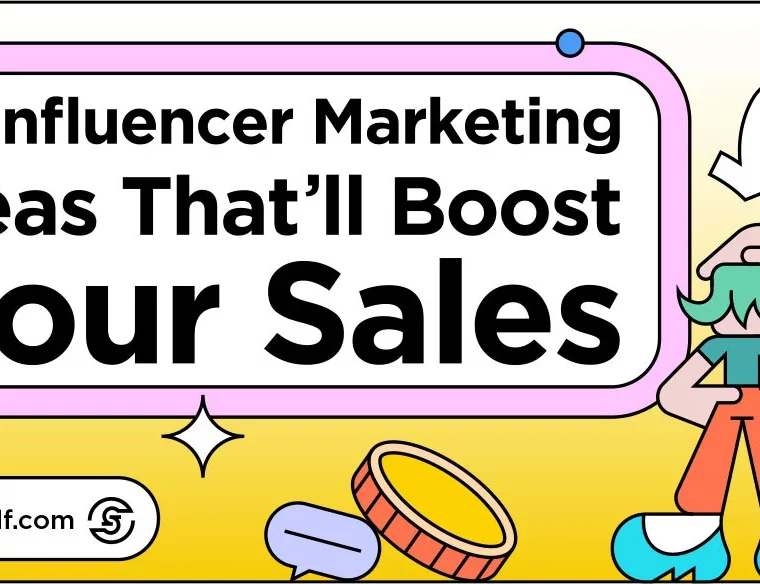Marketing campaigns for sports and outdoor brands have matured a lot over the last 10 years. More than just the pretty landscapes or the aerial shots, the marketing for outdoor brands is turning traditional calls-to-action on their heads and making us actually want to check out the products placed in live action shots…whether or not we love the great outdoors.
In 2019, outdoor brands are uniquely positioned to deliver a creative and visually-amazing collection of marketing campaigns right to our screens So, in this post, we’re analyzing some of the more interesting campaigns we’ve seen from outdoor brands, telling you what worked and how you can use their success as a model for your own campaigns.
Quick & Dirty Overview of the Outdoor Market’s Surprising Growth
The retail category known Sports & Outdoors is booming. Sales of outerwear, shoes, fitness equipment, water sports, hunting and fishing gear, sporting weapons, swimming accessories, winter sports gear, and hiking poles (not an exhaustive list) amount to about $67.75 billion in global annual sales (about one-third of that comes from US consumers), with year-over-year growth of 8.1 percent pushing that number to $92.36 billion by 2023.
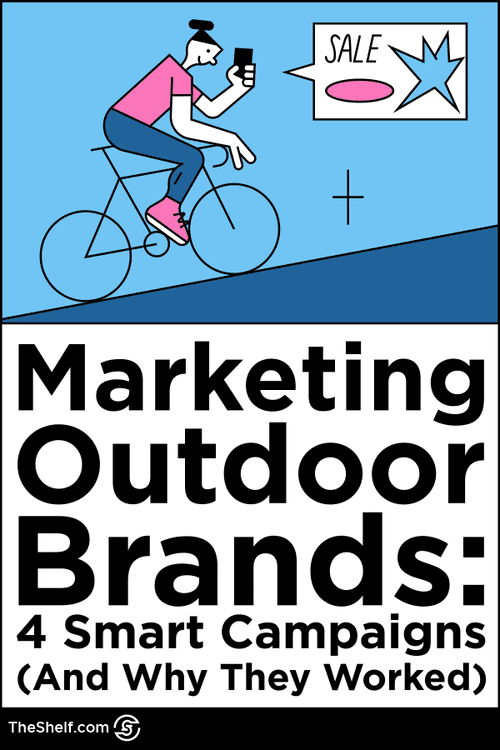
Around the world, Statista estimates 675 million will take part in outdoor activities in 2019. In 2016, more than two more million people joined the other 48 percent of the US population and took up a new outdoor activity which required them to purchase new equipment. That’s some serious shopping. And I would suspect it’s no coincidence the growth of outdoorsy types directly coincides with the growth of photo sharing networks like Instagram.
Outdoor activities carry with them a wide range of spending opportunities on things like clothing, accessories, equipment and supplies. AND the amount of money consumers spend depends almost entirely on their chosen activity and the difficulty level of what’s involved.
The much-talked-about decline in retail sales hasn’t really touched the outerwear (coincidentally, it’s also missing innerwear – bras and briefs). Fashion apparel sales are down four percent, while sports apparel sales are up two percent.
Thanks to a mixture of “athleisure” making a fashion come back in a big way, and an increase in people looking to connect with nature and unplug from the digital world, outdoor brands are definitely having a moment. That said, let’s see how they’re capitalizing on it with social.
Outdoor Brands That Are Leveraging Digital Marketing to Boost Brand Awareness
The Instagram Savvy of Outdoor Voices
CORE STRATEGY: CROWDSOURCE
Sportswear retailer Outdoor Voices sells all-weather technical apparel for active lifestyles. Most of us don’t give much thought to the textiles industry… unless you’re in it. But it takes a special kind of magic from a special kind of clothing wizard to come up with the technology to make athletic apparel that rebuffs sweat.
With locations in L.A., SoHo, DC, Boston, Chicago, and other trendy spots in major cities across the U.S., Outdoor Voices has amassed a sizable Instagram following of more than 400k users, many of whom wear being called a “recreationalist” as a badge of honor. It’s something of a movement.
WHY SOCIAL MEDIA IS WORKING FOR THIS OUTDOOR APPAREL RETAILER
They speak the language of their core audience.
Outdoor Voices has mastered the art of low-key, friend-to-friend conversation online. None of the company’s 3100+ Instagram posts sound like “branded content”. You could say the same thing of Nike, but Nike’s vibe is anything but low-key. And that’s another nuance of Outdoor Voices successfully speaking the language.
While Nike targets those who want apparel for optimal performance (you’re familiar with Nike’s popular “Just Do It” motto, right?), Outdoor Voices promotes athletic and athleisure apparel for buyers who are “human, not superhuman”. OV sells apparel that helps people move seamlessly from “gym life to life-life” under the hashtag #DoingThings.
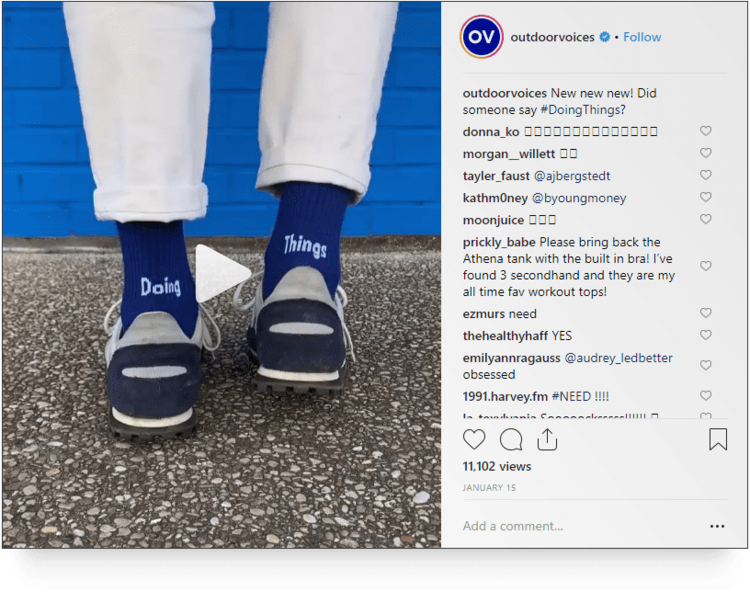
Outdoor Voices leverages user-generated content.
Outdoor Voices is successfully parlaying everyday posts into branded content and earned media by taking advantage of user-generated content – posts generated by their audience that the brand hasn’t paid the audience members to create.
What’s cool is the first strategy and the second strategy work in tandem. Since the goal is to target everyday people DOING everyday things, it reduces the “regram criteria” for content posted from their followers to be curated as part of OV’s feed. Followers don’t have to be feeling the burn at the local CrossFit box to be regrammed as UGC. They just have to be DOING SOMETHING.
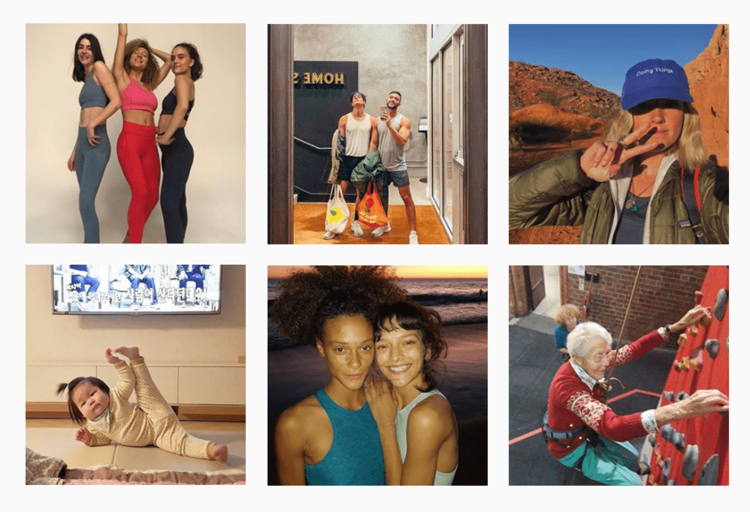
Moosejaw’s Email Marketing
Core Strategy: Make every brand-customer interaction memorable
If ever there was a company with a strong brand voice, Moosejaw (on Instagram @moosejawmadness) would be it. Moosejaw isn’t the only company to sell outdoor clothing and gear, so the company’s marketing strategy is to make each experience customers have with the brand a memorable one. And they do a remarkable job of making good on that goal by creating messages and content that are fun, quirky, and a bit irreverent. The company’s tagline is simple: “The most fun outdoor retailer on the planet”.
So… Moosejaw’s near-legendary email marketing strategy springs from a keen understanding that they are not the only game in town. And the marketing needs to provide consumers with a compelling reason to buy from Moosejaw.

Historically, Moosejaw’s award-winning email marketing campaigns have been a series of smart attention-getting programmed messages… some of which have toed the line between being quirky and funny to being offensive.
Moosejaw’s emails are wordy, contain very few pictures, and are loaded with big chunks of text – exactly what they tell you not to do on Day 1 of email marketing school. So, why do their emails work so well?
WHY EMAIL MARKETING IS WORKING FOR MOOSEJAW
Moosejaw uses a consistent (and unrelenting) brand voice. Moosejaw’s brand voice typically drips from every single character of the marketing content. With opening lines like “We’re excited to show you some weird stuff, but not that weird” you know you’re in for a wild ride right from the start.
The company also pays attention to the details that so often get overlooked by marketing teams… things like making sure your small print is on-brand.
“Our mean lawyer is making us add this info. Blame him, not us.”
Every single word this brand puts out there is carefully thought out and planned.
Experiential marketing and total brand immersion.
Moosejaw doesn’t just limit its shenanigans to email marketing, though. The company is big on experiential marketing as well. Moosejaw has been known to treat holding callers to a recording of Winston Churchill. Head into one of their stores, and you might just be surprised with a game of hide and seek by the store staff.
Thanks to its mixture of youthful brand personality and digital marketing prowess, Moosejaw now conducts a large chunk of their sales online, which is pretty consistent with its target market being active Millennials and Gen Z consumers who, by this time, are fully expecting brands to do something cool to win their loyalty and dollars.
Not being “market-y” all the time.
It’s not unusual for a Moosejaw campaigns to attract media attention – not because of their intricacies or marketing prowess, but because of their silliness and uniqueness.
One of their catalogs included an augmented reality component that allowed users to see through the clothes of catalog models by downloading Moosejaw’s X-Ray Body Scanner app. Not kidding.
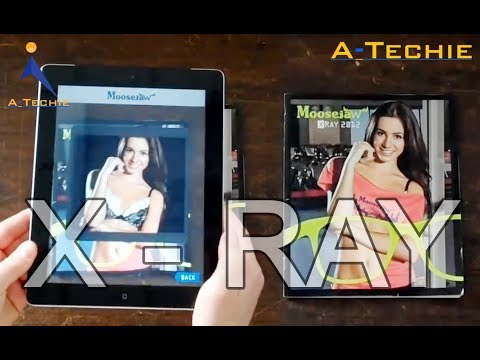
Did it provide extra product detail? Nope. Just showed good-looking models in their underwear. Nothing useful to it at all, simply just there to make people laugh.
Long before being acquired by Walmart, Moosejaw killed at leveraging every opportunity as another chance to create a lasting impression with customers. It’s these types of little details, these tiny bits of fun that Moosejaw mixes into the marketing funnel that enables them to push past competitors. It’s what makes people read their emails, even when they aren’t looking for anything in particular. And, it’s these random reads that not only help keep the brand at the forefront of customers minds but can also encourage them to check out what’s on offer and make an unplanned purchase.
Patagonia’s Anti-Consumerism Print Ads
Core Strategy: Values-centered marketing
Patagonia is one of the most well-known and successful outdoor brands. As of 2018, this powerhouse brand is generating about $1 billion in annual revenue, which is pretty impressive in this tumultuous retail landscape. What’s most surprising about Patagonia’s monetary success is their consistent fight against consumerism and over-spending.
Their brand image is built on a platform of being friendly to the nature that their products are used in. So, a lot of their marketing campaigns have been centered around sustainability. The most well-known of these campaigns has to be the “Don’t Buy This Jacket” ad. Sent out into the world on the biggest shopping day of the year – Black Friday, and taking the form of a full page spread in the New York Times, their anti-buying message set the retail world ablaze.
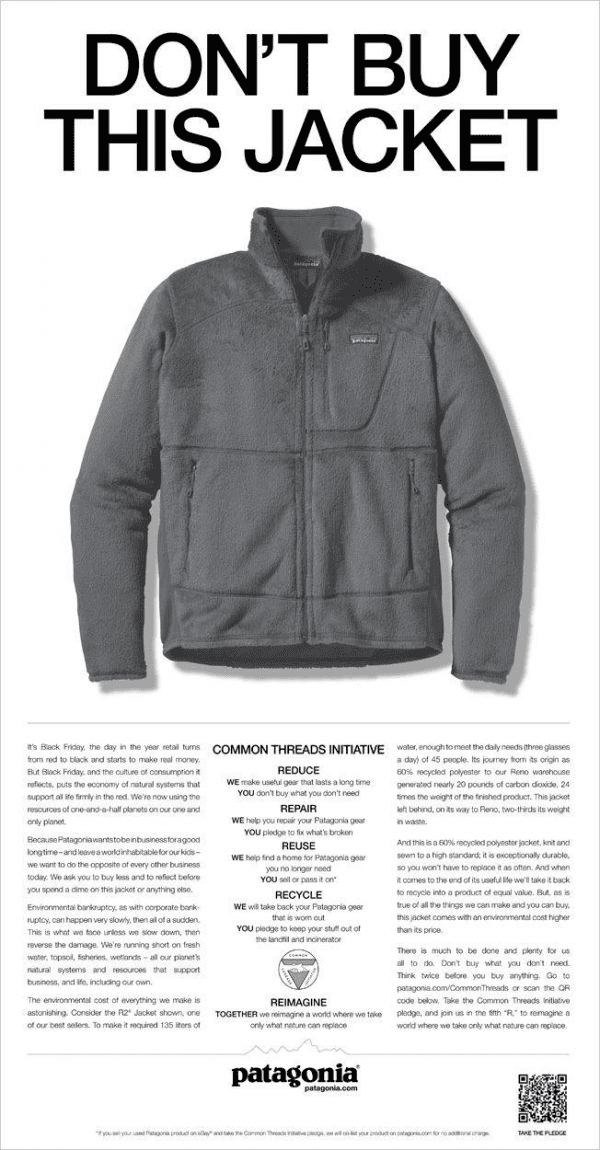
The ad detailed exactly how much of an environmental impact each of their jacket’s had to give some serious weight to their anti-consumerist message. Encouraging their customers to only buy their products if they actually need them runs strongly through all their marketing and branding.
PRINT AD STRATEGIES THAT WORKED FOR PATAGONIA
Aligning your message with your mission. Patagonia’s target customers are people who respect the outdoors as much as they love them, and Patagonia’s products specifically appeal to this demographic. This approach to ethical consumer behavior also falls in line with recent buyer trends. Millennials have long been focused on buying ethically-sourced products, and are more inclined to spend their money on products that come from a sustainable brand. In fact, 66 percent of all consumers are willing to spend more on a product if it comes from a sustainable brand.
Doing the opposite of what you’re supposed to do.
In lieu of pushing products that customers will need to replace every few months, Patagonia publishes tips on how to repair products if something happens to them out in the wild. It also runs “Worn Wear” events across the country helping customers to repair clothing. Alternatively, you can take your Patagonia products straight to the company, and Patagonia can repair it for you.
The outdoor mega-brand has built its reputation creating long-lasting high-quality products for the outdoor market, and more than once the company’s used disruptive marketing to spread its message to the masses. Patagonia is dedicated to keeping the environment healthy while running a successful business. This can be seen in their own mission statement: “Build the best product, cause no unnecessary harm, use business to inspire and implement solutions to the environmental crisis”. Lofty goals indeed.
Patagonia not only focuses on being ethically sound but also on storytelling. Company values run deep, but no one would know a thing about them if they didn’t invest in their marketing. Patagonia has successfully married the brand message, ethos, and beliefs into its marketing strategy. Not only did it draw the eye in with its title, but it also gained a lot of media attention for its bold message. So, a double whammy. Making headlines with your headline? Very cool.
Don’t be afraid to try something new, as long as it doesn’t take away from what’s really important to your brand. Take a risk, dare to be different, and see the sales start rolling in. Don’t worry about making it too busy either. Sometimes, the most dramatic and effective ads are the simplest ones.
LL Bean’s Interactive, Event-Based Marketing
Not all of us manage to embrace the outdoors as much as we’d like. Tied to our desks at 9 to 5 jobs, we sit and longingly gaze out our windows, or at the stunning landscapes on our computer desktop backgrounds. LL Bean found a way around this with an interactive marketing campaign it launched last year.
The “Be an Outsider” campaign encouraged New Yorkers to step outside the office and spend some time working in the company’s pop-up co-working space in Madison Square Park. Workers could book their space ahead of time, or simply turn up on the day and be able to work away under the June sun (or rain). Yep, whatever the weather, they were determined to go ahead with the plan.
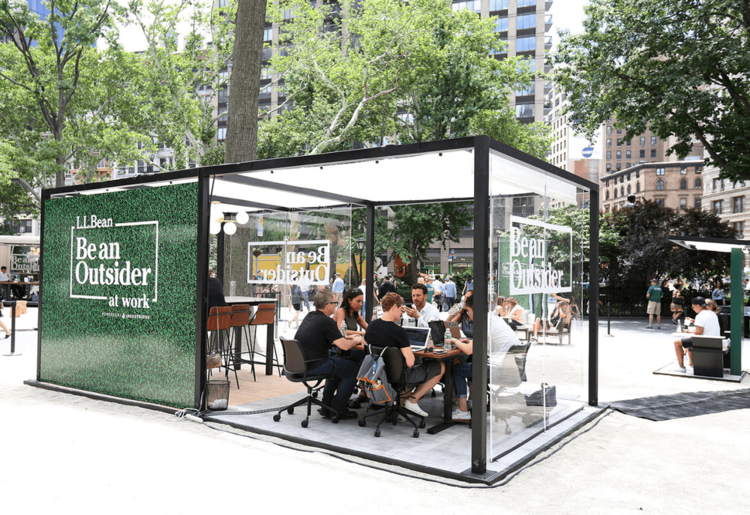
LL Bean ran their innovative campaign was also run in other cities around the US including Boston and Philadelphia. LL Bean ran a survey to tie in with this campaign, discovering that workers between 22-65-years-old were spending a whopping 95 percent of their time indoors – with half of that time dedicated to working.
86 percent of those they surveyed also said they wished they could spend more time outdoors during the work day, so giving them the chance to do this was an excellent way to market its products. The campaign was a great success. Multiple teams used the space for real, important work – not just an excuse to goof off for a few hours.
HOW LL BEAN MADE AN OFFICE CUBICLE (OF ALL THINGS) ON-BRAND FOR THEM
Going for the least likely consumer.
LL Bean’s “Be an Outsider” campaign ran for more than a year – quite different from the “here today, gone today” world of marketing. One of the cool things about the pop-up office was that LL Bean filled it with tips on how users could get outside more. There was also a downloadable PDF guidebook.
Unlike most other outdoor brands that focus on the wild, adventure-filled side of the great outdoors, LL Bean shifted to a more everyday outdoor style. While they still sell all the outdoor gear a budding adventurer would need, by zeroing in on the everyday enthusiast (especially one who may not have tons of time), the company can expand its target market to include those of us who love the idea of the outdoors but lack the adrenaline junkie gene that spurs us to explore it.


The company created a branded hashtag #BeAnOutsider, allowing for a curated feed of user-generated content to go along with the campaign. Experiences like these get people talking and organically spreading both your brand name and your marketing.
By expanding their target audience, LL Bean was able to appeal to a wider section of the public than most outdoor brands have so far been able to do. And, thanks to their wide collection of content types in this campaign, they were further able to appeal to a broader audience. We all prefer to consume content in different ways – some of us prefer to watch a short video, some to read through web content, and some through social media hype.
Cashing in on a trend (even one that’s anti-your thing).
LL Bean was able to cash in on two popular trends: remotely working from co-working spaces AND improving mental health in the workplace. Essential for younger generations.
We’ve written before about marketing to Gen Z consumers and the Millennial market (we published posts on both Millennial men and Millennial women). By honing in on how being outdoors benefit busy professionals, LL Bean creates an opportunity to widen their market.
Cross-channel messaging.
Outdoor brands are often marketing to those of us who like to unplug. While they may be pushing hard on digital platforms, they’re not skimping elsewhere either. Build your marketing message throughout your channels, even if your focus is on digital.
In-store experiences, product launches, and special events are all ways in which you can tie your digital marketing into real, tangible campaigns. And, with many people starting to see the draws of a “digital detox”, pouring yourself into multiple channels can only be a good thing.
Finding new and interesting ways to expand your target audience can help bring in a nice boost in sales as well. Find a way to tie your product into an everyday event that the majority of the public take part in. This way, you’ll have a safe and simple route to a whole new market.
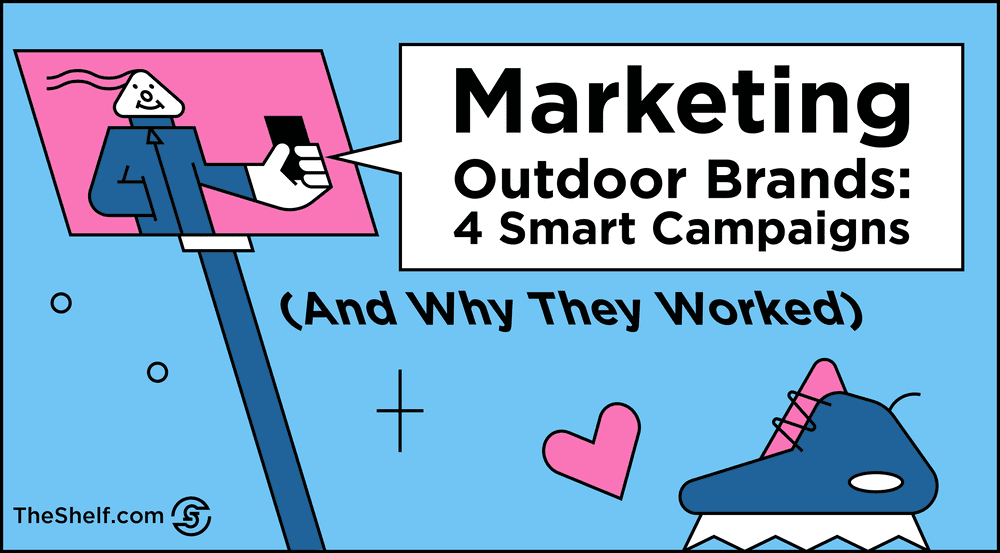
Conclusion
All four of these brands exist in the niche of outdoor products, but they all have very different voices and marketing styles. Despite their differences, they all share one thing in common – awesome marketing. So, what lessons can these three outdoor brands teach you?
One thing you’ll notice throughout all three brands mentioned above is that their brand styling and brand voice carries through everything they do. From product design to social media posts to campaign ideas – keeping your brand flowing smoothly through all this is the perfect way to ensure a successful campaign.
Whatever industry you’re working in, you’ll never be the only one there. So, you need to make sure you stand out from your competition. Brand voice is the easiest way to do this. Every time you “speak” be it in person or online, people should instantly know who is talking to them. This is the magic of strong branding, and it works wonders.
All of these brands worked hard to skirt around the rules of marketing in one way or another. They were disruptive, they were rebellious, and they were successful. Today, we are inundated with ads from every side – TV, social media, emails, banners. Trying to stand out in this huge crowd can be tricky. The best way to do it? Dare to be different.
Many marketing teams worry that by going too far out of the box, they may fall flat on their faces. But, with no risk, there’s no room to grow. Sure, it might not work, but the same could be said for any marketing campaign – different or not. So, it’s better to take the risk for a bigger payoff, than playing it safe once more.






